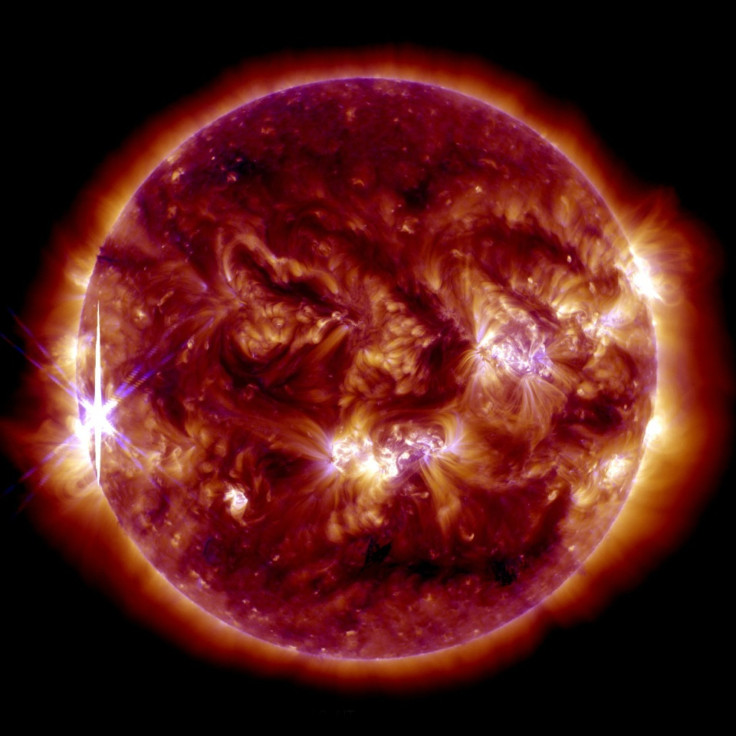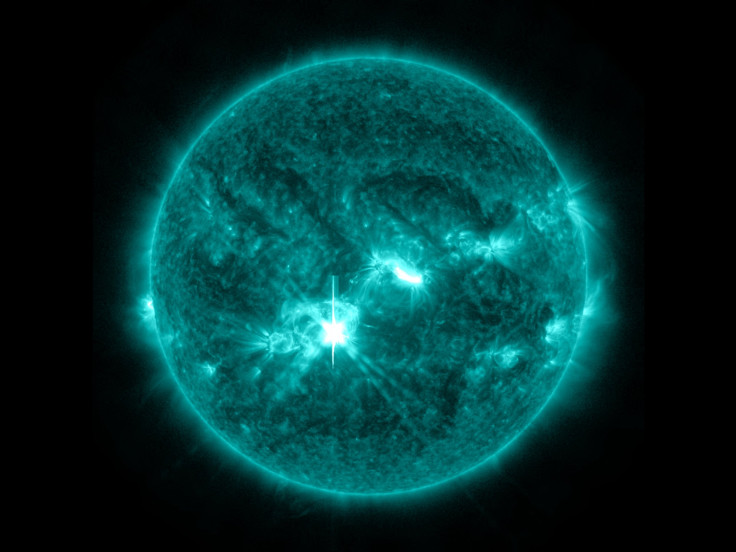Solar Maximum: Three Solar Flares And A Coronal Mass Ejection As The Sun Reaches Peak Solar Activity
NASA’s Solar Dynamics Observatory, SDO, has been quite busy this week. After a look at the sun’s “canyon of fire,” recent solar activity suggests the sun is getting close to the “solar maximum” phase. During the normal 11-year solar cycle, the sun sees a spike in activity and this week there were three solar flares, including two “X-class” solar flares in one day, as well as a coronal mass ejection, CME, associated with a solar flare that occurred earlier in the week.

On Oct. 25, NASA’s SDO observed two “X-class” solar flares, the highest intensity, in a span of seven hours. According to NASA, an X2 solar flare is double the intensity of an X1 flare and an X3 is triple the intensity of an X1. The largest solar flare ever observed was an X45 in November 2003. The first solar flare, an X1.7 class solar flare, peaked at 4:01 a.m. EDT and that event caused a temporary radio blackout and disrupted some low-frequency navigation signals. The second solar flare, an X2.1, peaked at 11:03 a.m. EDT.

Earlier in the week a medium-strength solar flare, an M9.4 class, erupted from the sun and a fast-moving CME was associated with the event, reports NASA. A CME shoots out billions of tons of solar particles into space. These particles cannot penetrate Earth’s atmosphere and pose no threat to humans but can affect satellites, power grids and communications systems.
On Friday, National Oceanic and Atmospheric Administration’s, NOAA, Space Weather Prediction Center reported an R3 (strong) radio blackout that was associated with the first solar flare on Friday and was monitoring for potential geomagnetic storming, associated with the CME from earlier in the week. According to NOAA, “Forecasters expect impacts from the first of the CMEs in about 72 hours, but things can change given the volatile nature of the three active centers on the solar disk. Possible G1 (Minor) Geomagnetic Storm levels are forecast.”

Solar maximum, or solar max, is a period of increased sunspot activity. Earlier in the year, it was believed the peak of this solar cycle, Solar Cycle 24, may be the weakest yet, due to infrequent solar activity. Researchers believed that the sun may be experiencing a double peak, with a weaker peak early in 2013 and the second peak occurring in late 2013 and into 2014.
NASA’s solar observatories are currently monitoring the sun and researchers believe solar max’s peak may be fast approaching as evidenced by the increased solar activity. If that’s the case, another interesting phenomenon will have occurred; the flipping of the sun’s magnetic fields. As predicted by researchers from Stanford University in August, the sun’s poles will be reserved.

Todd Hoeksema, a solar physicist at Stanford University, observed the sun’s north pole had already switched polarity and the south pole is expected to follow suit by the end of 2013 or early in 2014. The reversal of the magnetic fields would indicate the halfway point of Solar Cycle 24 which started in 2008.
A video of the projected path of the CME, courtesy of NASA, can be viewed below.
© Copyright IBTimes 2025. All rights reserved.






















